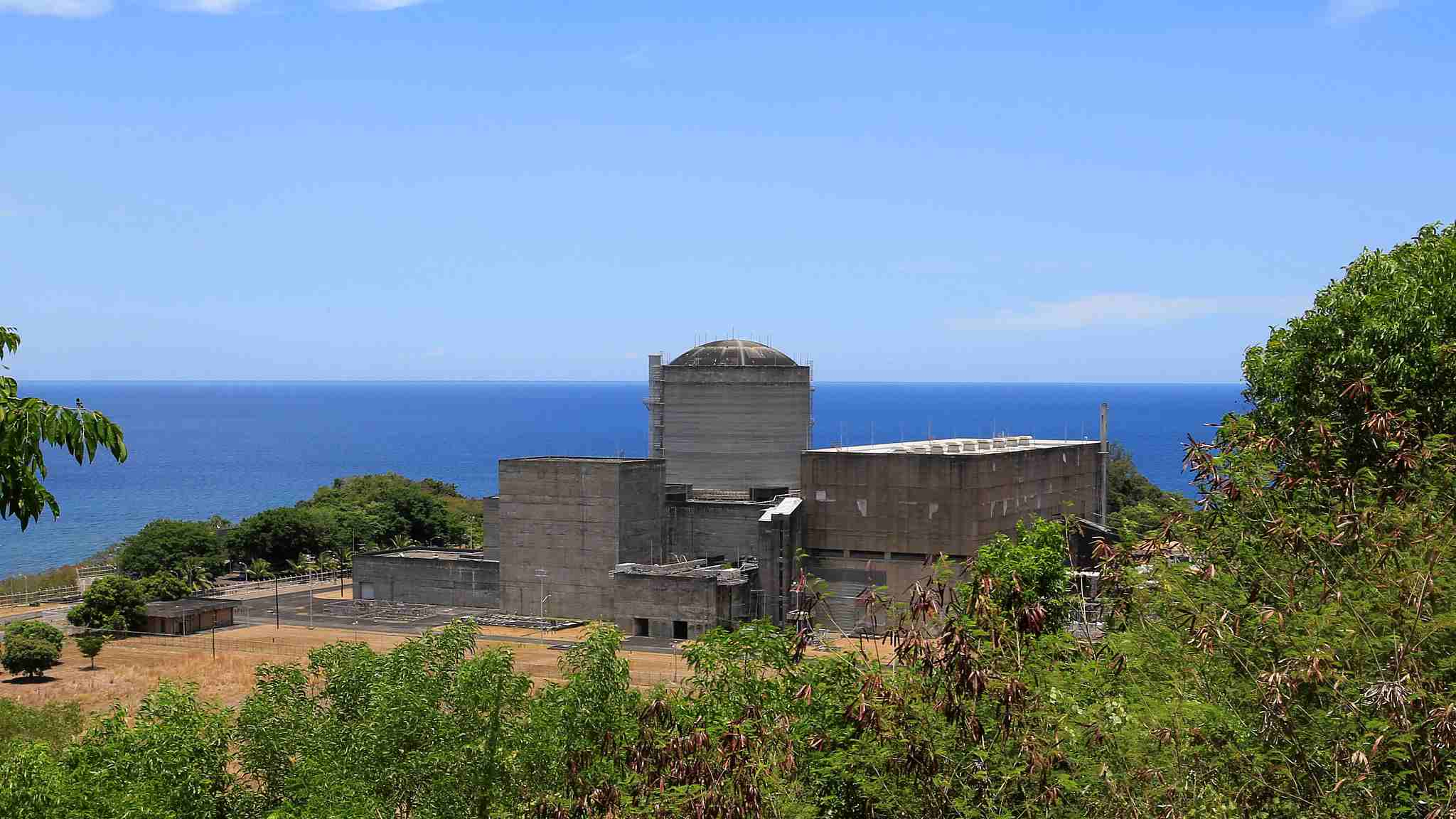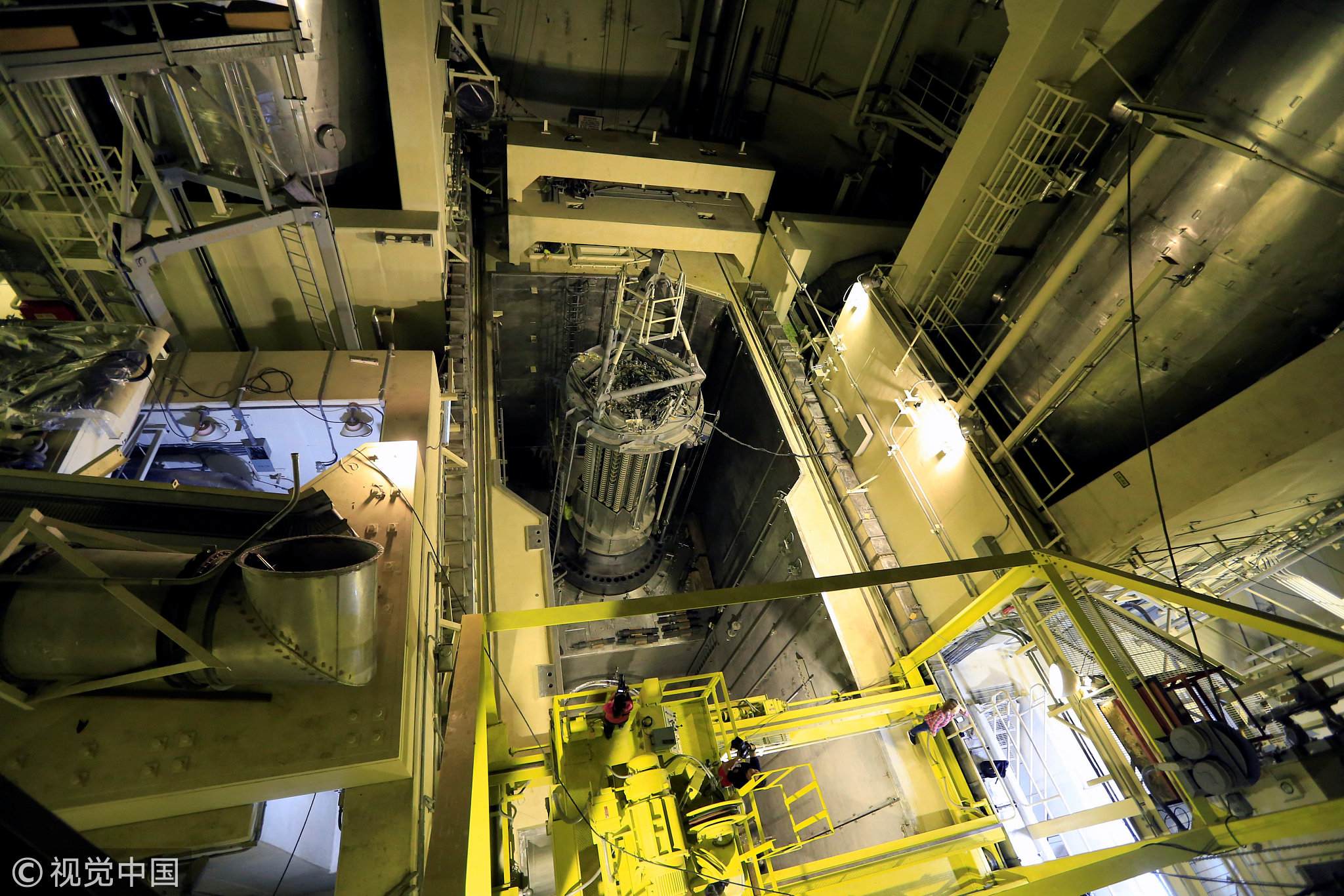
Tech & Sci
20:15, 25-May-2018
Philippines considers reviving nuclear power plant to meet energy demand
April Espejo

In the central Luzon province of Bataan, overlooking the South China Sea, the only nuclear power plant in Southeast Asia sleeps.
But in light of ever-mounting energy costs and increasing demand in one of the world’s fastest-growing economies, the country's energy department is pushing again for the revival of the mothballed Bataan Nuclear Power Plant (BNPP). According to Reuters, the Department of Energy has asked President Rodrigo Duterte to fast-track the process and issue an executive order declaring the country ready for a nuclear power program.
"There's still a few of us who have been here from the start who are hoping to see the plant running before we retire," said Wilfredo Torres, a technician who was hired in the 1980s, but has spent the past decade giving guided tours at the dormant facility.
To complement the annual state budget allocated for maintaining the BNPP, the government opened it to the public in 2009, attracting about 6,000 students and guests yearly.
‘Worth considering’
Previous attempts to pursue nuclear energy in the Philippines have failed due to safety concerns, and because central to the plan is the revival of the Bataan plant, which was built during former President Ferdinand Marcos' rule and is surrounded by several controversies.
But with an economy growing as fast as China’s – at 6.8 percent in the first quarter – Manila’s energy consumption is expected to triple to 67,000 MW by 2040.
“It is worth considering. One of the weaknesses of the Philippine economy, aside from infrastructure, is the high cost of energy,” Philippine Senator JV Ejercito-Estrada said in a previous interview.
The senator made the suggestion after the Philippine Institute of Volcanology and Seismology (Phivolcs) vouched for the safety of the area on which BNPP stands, assuaging fears that an earthquake or eruption of a nearby volcano could lead to a catastrophe. Apart from minimal ground shaking in the event of an earthquake, the agency said there are no other foreseeable hazards that could undermine the BNPP as the volcano is not active. There is also no risk of a tsunami, unlike the Fukushima Daiichi reactors in Japan, as the 369-hectare property is located 18 meters above sea level.
Coal fuels half of the Philippines’ power grid, with natural gas and renewables each accounting for over one-fifth and oil the rest.
By tapping nuclear, power rates would go down significantly: from five Philippine pesos (0.10 US dollars) to around 1.80-2.50 Philippine pesos per kilowatt hour.
Philippine power rates, which are not state-subsidized, were ranked the 16th most expensive out of 44 countries surveyed in a 2016 study commissioned by power retailer Manila Electric Co. Japan topped the list.

Local photographers take pictures of the nuclear reactor inside the Bataan Nuclear Power Plant (BNPP) during a media tour inside the BNPP compound in Morong town, Bataan province, Philippines September 16, 2016. /VCG Photo
Local photographers take pictures of the nuclear reactor inside the Bataan Nuclear Power Plant (BNPP) during a media tour inside the BNPP compound in Morong town, Bataan province, Philippines September 16, 2016. /VCG Photo
‘Beyond revival’
Other lawmakers, however, still think that the challenges of reviving the plant far outweigh the advantages. Senator Sherwin Gatchalian said a nuclear power plant is a natural target of terrorism. “Considering the limitations of our military and our police force I think we should shy away from the high-risk fuel sources such as nuclear,” he said in a recent forum in the Philippines.
Russia initially urged Duterte to re-evaluate the plant. Russian experts even proposed steps on how to get funding, conduct trainings for technicians and draft regulations. However, after careful inspection, Russian Ambassador Igor Khovaev concluded that the BNPP is “beyond revival”.
"The safety standards, [the] international standards are much, much higher than the standards on which the Bataan Nuclear Power Plant was built. So I think it's not possible at all," Khovaev said in an interview with CNN Philippines.
Opposition groups further argue that the cost of rehabilitating the BNPP, estimated at one billion US dollars, can instead be invested into renewable energy, lessening the hazards of nuclear energy.
Former President Ferdinand Marcos ordered the construction of the two-billion-dollar plant in 1976 with the ambition that it could usher in a new era of power and “launch the Philippines into the nuclear age and economic prosperity”.
Two years after it opened in 1984, the never-used facility was mothballed following Marcos’ ouster and the fatal Chernobyl nuclear disaster.
Decades after, the Filipinos have yet to see whether change will come in the form of nuclear power, and whether the country is ready for such change or not.
(With input from Reuters)

SITEMAP
Copyright © 2018 CGTN. Beijing ICP prepared NO.16065310-3
Copyright © 2018 CGTN. Beijing ICP prepared NO.16065310-3